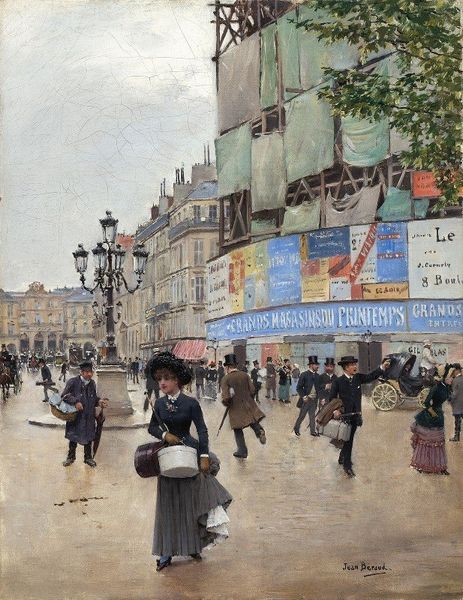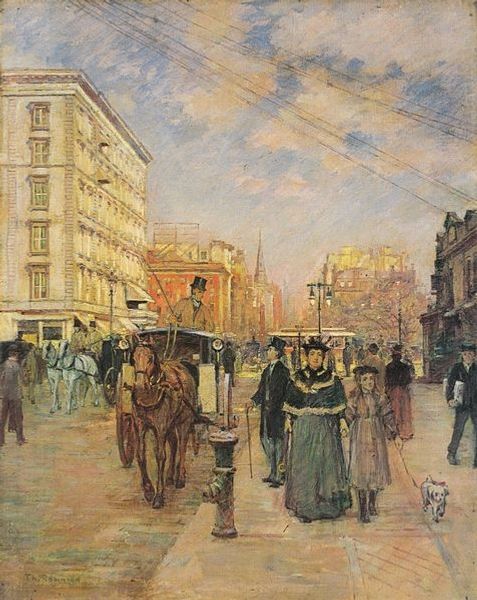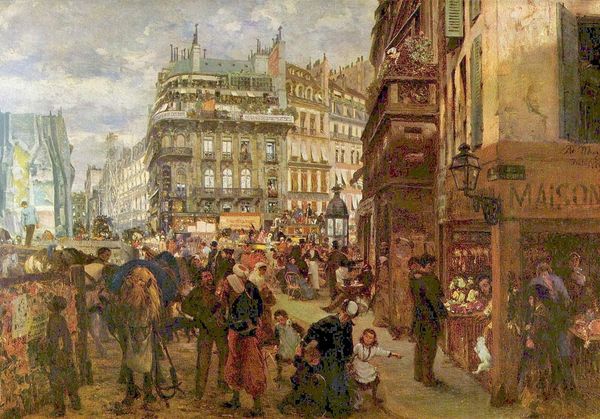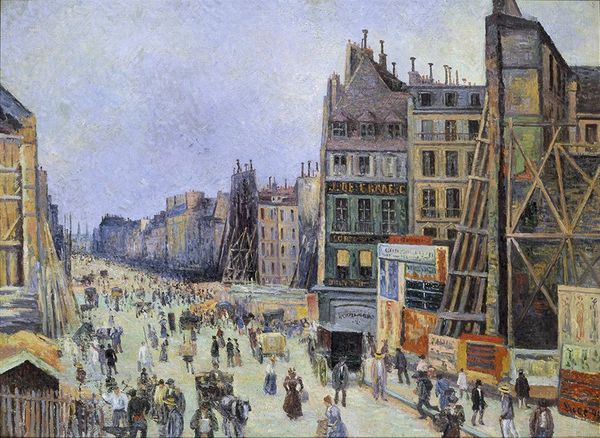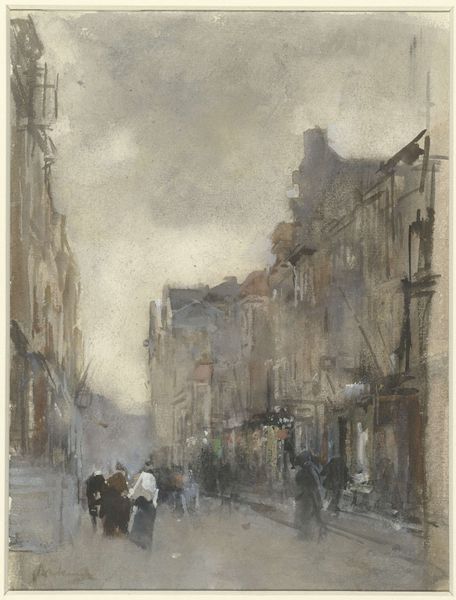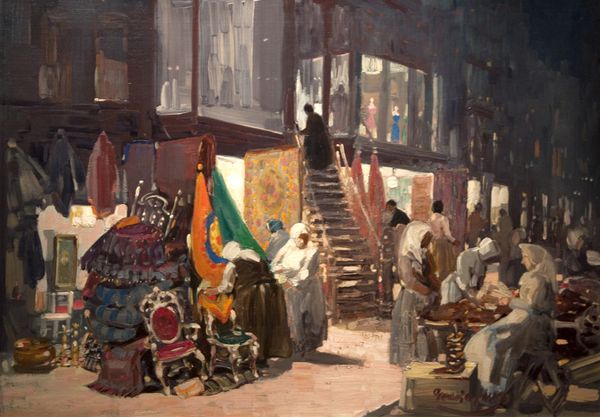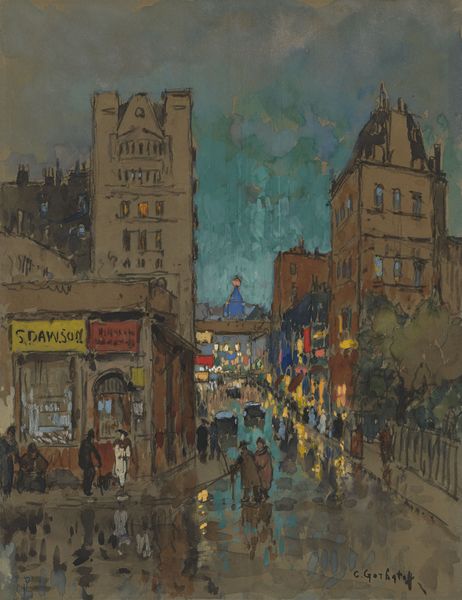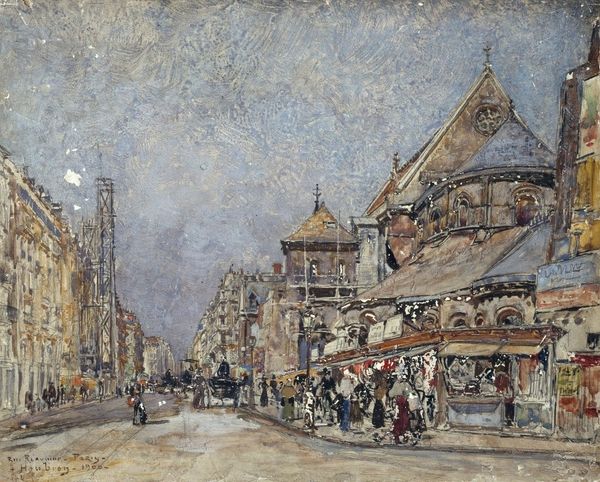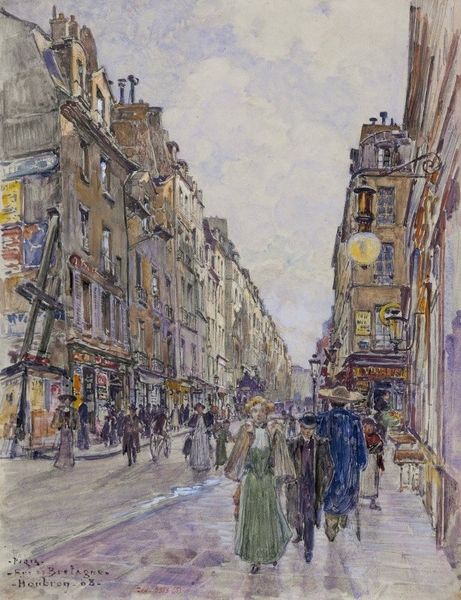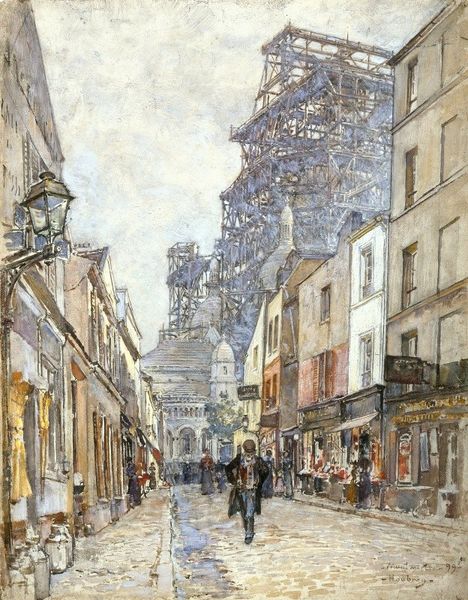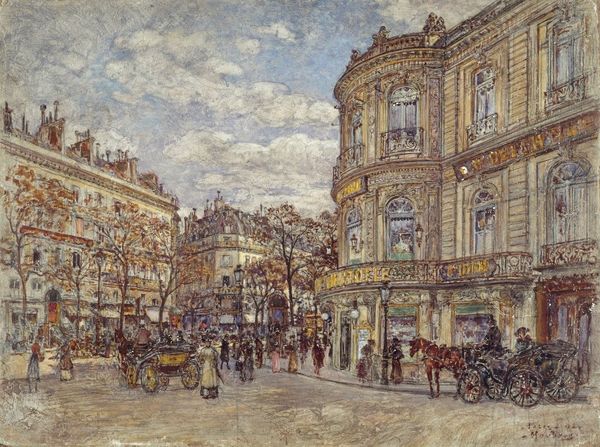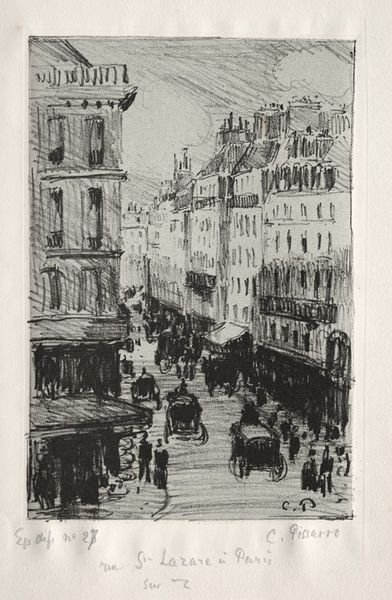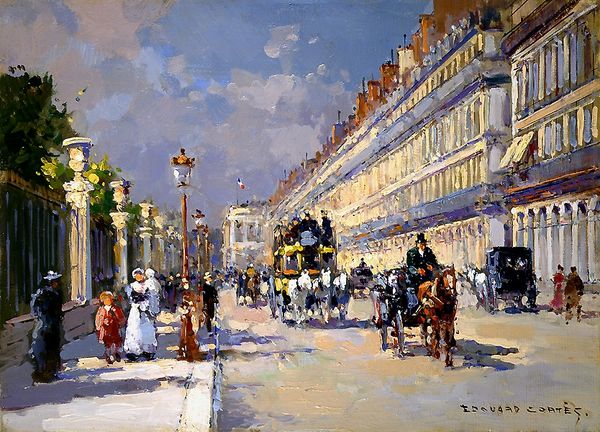
painting, oil-paint
#
painting
#
impressionism
#
oil-paint
#
oil painting
#
cityscape
#
genre-painting
#
post-impressionism
Copyright: Public domain
Curator: Looking at "La Rue Mouffetard," painted around 1890 by Maximilien Luce, I am struck by the tangible quality of Parisian life depicted here. The artist captures the hustle and bustle of the market street. Editor: It feels almost suffocating. The dense crowd and the tightly packed buildings—there's a kind of claustrophobia conveyed through those tiny, individual dots of color. It is an oil painting that leans into a tangible pointillist feel. Curator: Indeed. And consider Luce’s political leanings; his engagement with anarchist circles surely informed his interest in representing everyday life, in showing the labor and movement inherent in a bustling street like this. He doesn't romanticize poverty or labor, instead, he shows it frankly. Editor: I agree, there's nothing romantic about it. You see the raw materiality of labor in how each figure, each brick, each sign is built up from these small, deliberate marks. It's like an equation where labor multiplied becomes the image. But let’s address those advertisements looming overhead—a pantheon to consumerism overlooking the grit. Curator: The signs really dominate the visual field, don't they? “Au Pantheon Nouveautes,” for example, shouting about the newness of commodities. It suggests a city increasingly defined by its consumer culture, the market literally looming over its participants. These early commercial signals transform the cityscape itself. Editor: And the materiality of those signs - the paint, the construction, the labor involved in producing these huge commercial messages. They mirror the same methods Luce employed to build his painting, but advertise opposing values, like luxury vs necessity, mass production versus singular expression. Curator: Absolutely, the painting sets up an interesting tension between handcraft and mass production. The painstaking technique of Pointillism mimicking, but also subtly critiquing, the burgeoning commercialism of the period. It's an intriguing comment on the social and economic transformations sweeping through Paris at that time. Editor: Thinking about it, “La Rue Mouffetard” provides a striking look into a particular moment in Parisian history, as much sociological document as artwork. I walked through that market on my last visit to Paris! Curator: I'm now considering how much labor it must have taken for Luce to complete it, capturing this frenetic scene point by painstaking point.
Comments
No comments
Be the first to comment and join the conversation on the ultimate creative platform.
